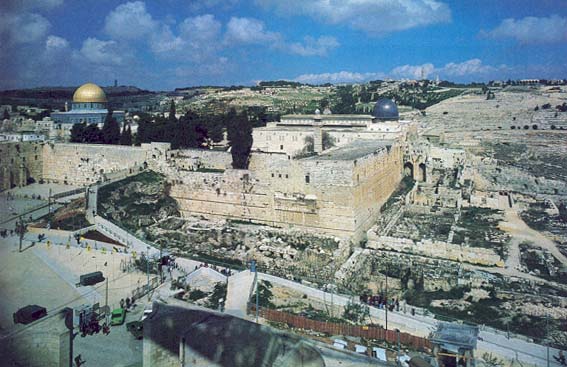Image Details

Richard Nowitz
The Temple Mount from the southwest. At the end of the first century B.C.E., Herod the Great rebuilt the Jerusalem Temple and doubled the size of the Temple Mount, extending it to the north, south and west and enclosing it with four immense retaining walls. Today, two Moslem structures dominate the Temple Mount—the gold-domed Dome of the Rock in the north, at left, and the lead-domed El-Aqsa Mosque in the south, at center. Remnants of Herod’s Temple Mount retaining wall are visible all along the western wall, from the Western Wall prayer plaza, at far left, to the southwest corner of the Temple Mount, at center. Much of Herod’s construction, however, now lies underground.
Benjamin Mazar’s 12-year, 4-acre excavation beside the southern wall of the Temple Mount (right of center in the photo) exemplified an earlier era of Jerusalem archaeology—excavation on a grand scale. Today, tourists may visit the preserved Umayyad palaces (the remains are visible just outside the wall) built in the seventh to eighth century and excavated by Mazar in the 1960s and 1970s.
